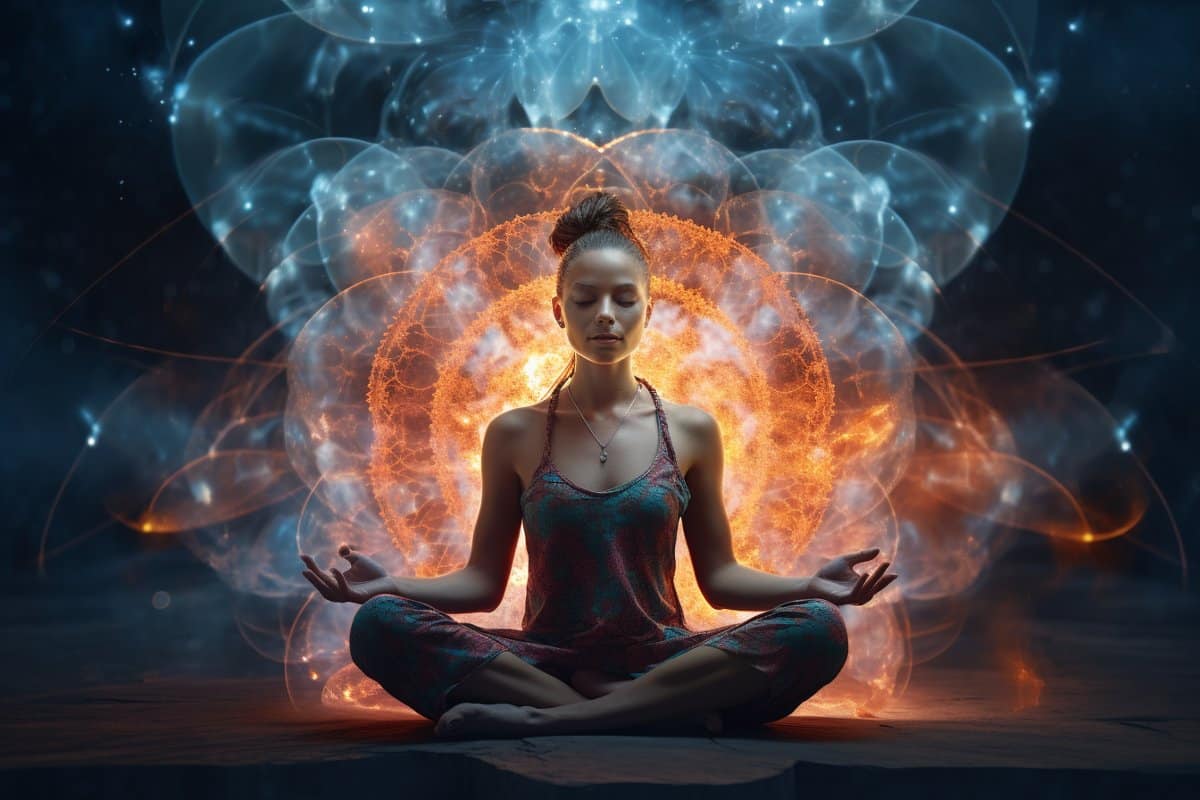Summary: A new study utilizing ultra-high field 7T MRI technology has mapped the brain’s activity during jhana meditation, revealing distinct regional activations that correlate with advanced meditative states.
These findings suggest a potential for developing novel meditation-based therapies to enhance well-being and address psychiatric disorders. The study provides a detailed view of the brain’s response to jhana, illuminating its impact on attention, joy, equanimity, and self-perception.
Key Facts:
- Ultra-high field 7T MRI was used to map an adept meditator’s brain activity during jhana, a form of advanced meditation.
- Brain activity during jhana showed correlations with attention and qualities crucial for well-being, potentially disrupted in psychiatric disorders.
- The study opens avenues for meditation-based therapies and neurotechnology interventions to promote mental health and human flourishing.
Source: Mass General
Using advanced brain scanning technology, a team led by investigators at Massachusetts General Hospital (MGH), a founding member of Mass General Brigham (MGB), recently revealed insights into what happens in the brain during an advanced form of meditation called jhana.
By uncovering distinct patterns of activity in different regions of the brain during jhana, the research suggests exciting possibilities for innovative therapies merging ancient meditation practices with modern neuroscience to improve well-being.

For the recent study published in Cerebral Cortex, scientists conducted a form of ultra-high field functional magnetic resonance imaging on a volunteer who was an adept meditator with more than 25 years of meditation experience. Imaging data were collected during 27 sessions of jhana over 5 consecutive days.
The advanced absorptive meditation practice known as jhana is linked to self-transcendence, which is sometimes called ego-dissolution or insight into “no self,” and also attentional capacities and internally-generated joy and equanimity—qualities that are important for well-being and often disrupted in various psychiatric disorders.
“This study used an ultra-high field strength 7T magnetic resonance imaging system for enhanced brain mapping precision that has never been used in any study of meditation, let alone advanced meditation.
“This technology enabled us to evaluate the activity, with high precision, of the cortex, subcortex, brainstem, and cerebellum during a form of advanced concentration meditation known as jhana,” says senior author Matthew D. Sacchet, Ph.D., the director of the Meditation Research Program and an assistant professor of Psychiatry at MGH and Harvard Medical School.
“This allowed us to gain insights into the overall functioning of the whole brain in the context of jhana meditation, including the rarely studied brainstem and cerebellum.”
Sacchet and his colleagues also observed correlations between brain activity during jhana and attention, jhanic qualities (including joy, mental ease, equanimity and formlessness), and self-perception.
“This research is foundational for the development of cutting-edge interventions for supporting well-being and treating mental health conditions. These interventions could involve developing novel meditation-based therapies grounded in advanced meditation, such as jhana, which have received extremely limited attention from science,” says Sacchet.
“Our neuroscientific insights may directly inform neurotechnology including neurofeedback and brain stimulation that may be applied to target specific brain systems implicated in advanced meditation. Our work holds significant and untapped promises in alleviating suffering and promoting human flourishing.”
Sacchet and his team intend to develop an increasingly comprehensive science of advanced meditation through the development of a research center at MGH and HMS focused on this work. The group is currently collecting brain imaging data from additional meditators and is exploring additional methods to understand jhana and other forms of advanced meditation.
Additional authors include Winson F.Z. Yang, Avijit Chowdhury, Marta Bianciardi, Remko van Lutterveld, and Terje Sparby.
Funding: This research was supported by the National Institute of Mental Health, Dimension Giving Fund, Ad Astra Chandaria Foundation, Brain and Behavior Research Foundation, BIAL Foundation, and individual donors.
About this brain mapping and meditation research news
Author: Noah Brown
Source: Mass General
Contact: Noah Brown – Mass General
Image: The image is credited to Neuroscience News
Original Research: Closed access.
“Intensive whole-brain 7T MRI case study of volitional control of brain activity in deep absorptive meditation states” by Matthew D. Sacchetet al. Cerebral Cortex
Abstract
Intensive whole-brain 7T MRI case study of volitional control of brain activity in deep absorptive meditation states
Jhanas are profound states of mind achieved through advanced meditation, offering valuable insights into the nature of consciousness and tools to enhance well-being. Yet, its neurophenomenology remains limited due to methodological difficulties and the rarity of advanced meditation practitioners.
We conducted a highly exploratory study to investigate the neurophenomenology of jhanas in an intensively sampled adept meditator case study (4 hr 7T fMRI collected in 27 sessions) who performed jhana meditation and rated specific aspects of experience immediately thereafter.
Linear mixed models and correlations were used to examine relations among brain activity and jhana phenomenology. We identified distinctive patterns of brain activity in specific cortical, subcortical, brainstem, and cerebellar regions associated with jhana.
Furthermore, we observed correlations between brain activity and phenomenological qualities of attention, jhanic qualities, and narrative processing, highlighting the distinct nature of jhanas compared to non-meditative states.
Our study presents the most rigorous evidence yet that jhana practice deconstructs consciousness, offering unique insights into consciousness and significant implications for mental health and well-being.







